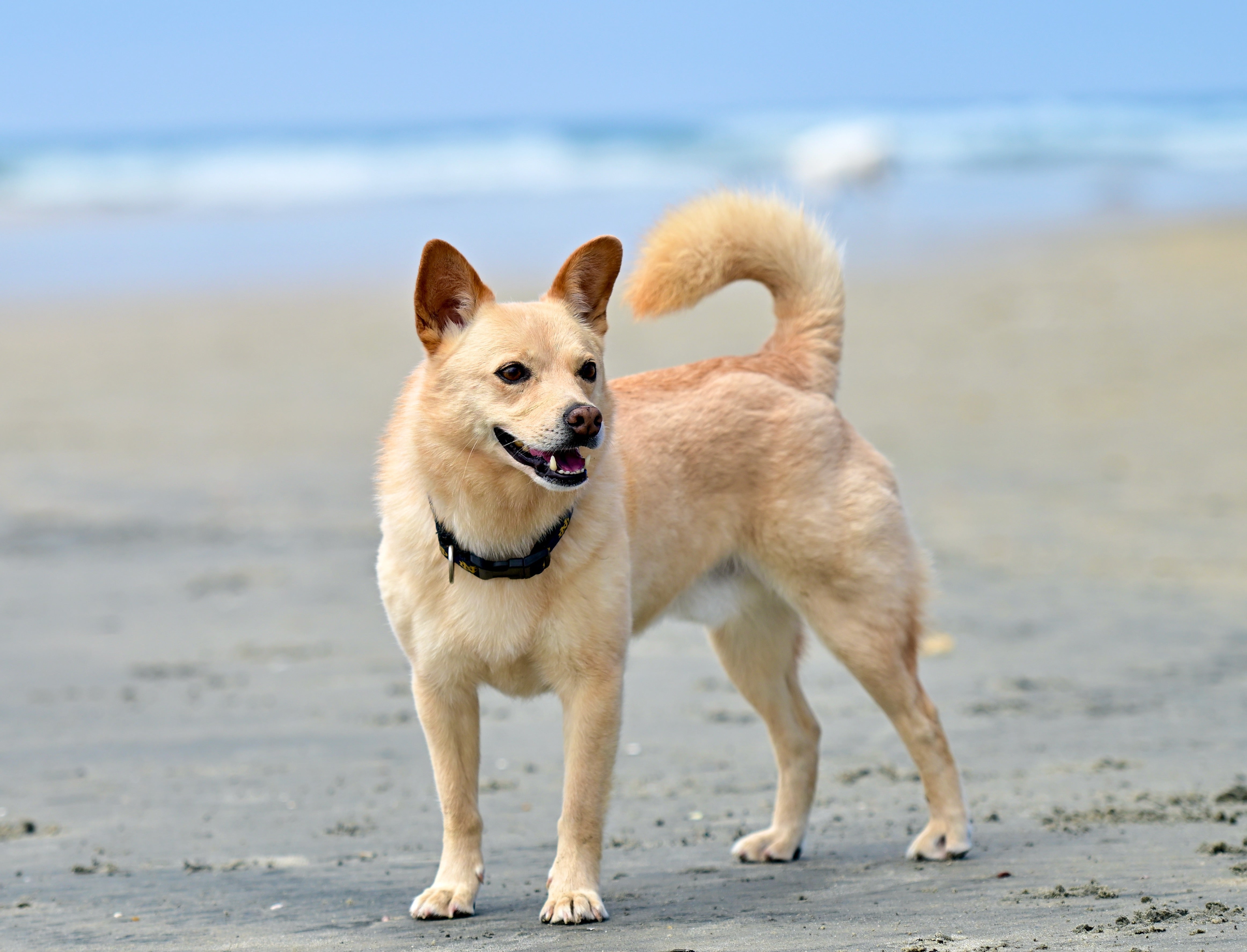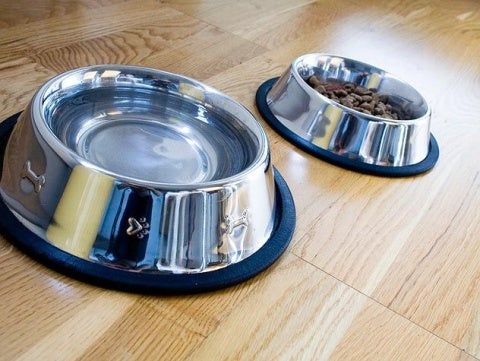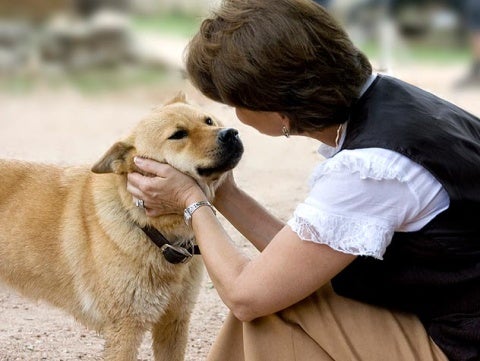Norwegian Buhund
Courageous, energetic, and friendly, the Norwegian Buhund is a Spitz-type dog featuring alert ears, a fully curled tail, and a double coat to protect them against typical Scandinavian weather. Substantial and square in build, the dog is a herder that likes to circle and gather. Their gait is effortless and confident.
Breed characteristics carousel
Learn More
Need to Know
- Dog suitable for owners with some experience
- Extra training required
- Generally healthy breed
- Enjoys active walks
- Medium dog
- Minimal drool
- Requires frequent grooming
- Chatty and vocal dog
- Barks and alerts to visitors/anything unusual
- Could have issues with unknown dogs but gets along with known dogs
- Gets along with other pets with training
- May need additional supervision to live with children
- Needs a large yard, either in suburban or rural areas
- Can be left alone occasionally with training
- AKC Registered Breed

Personality
Norwegian Buhund dogs are merry, energetic, and active. They make great companion dogs for families who have the same life philosophy. Eager to please and one of the easiest Spitz breeds to train, Norwegian Buhund dogs still retain some independence thanks to their hard-wired herding instincts. A full and busy schedule of work and play will keep them happy and healthy—and from becoming too mischievous when bored. While they make excellent watchdogs, they can excessively bark if they become overly bored.
Spitz-type dogs similar to the Buhund breed have been found on Norwegian archeological sites as far back as 900 A.D. “Buhund” means “farm” or “homestead” dog, clearly outlining the type of work the Norwegian Buhund did. They would watch over cattle, pigs, reindeer, sheep, and more, running down rocky and steep terrain to herd the livestock. The dogs were an essential part of Norwegian farm life for centuries and first arrived in America after World War II.
Vikings are the perfect match for the Norwegian Buhund but a little hard to come by these days. Ideal modern owners should have experience with Spitz breeds and skills in training a clever, independent dog that wants to work. Norwegian Buhund dogs do shed and bark, so an owner needs to be OK with these characteristics—and have a good vacuum and “settle” command. The dogs are active and agile, so it’s preferable owners live on a lot of land that has a fenced-in area, preferably in a colder climate. Norwegian Buhund dogs do not like excessive heat indoors or outside.
Buhund dogs want to work, so it’s best to provide them with the opportunity, especially if you live on a farm. If you don’t, lots of exercise, training, puzzle-solving, and more will keep their minds and bodies busy. They love running off-leash but still maintain their herding instincts making a reliable recall an important skill to have. Norwegian Buhund dogs have an insulated coat to keep them warm and dry in cold or wet weather, which they prefer. They do not like the heat, so it’s best not to exercise them in higher temperatures.
Inside, the Norwegian Buhund dog doesn’t require a lot of space, but owners should be aware that they do shed quite a bit, which could be an issue in a smaller home. Outdoors, however, is a different story. They will benefit from having a large yard to play and run in with a secure fence, but can also get by with lots of leash walks.
Spitz dog owners know all too well the sacrifice your home and vacuum might make during shedding seasons, and the Norwegian Buhund is no exception. The dog’s double coat molts quite a lot several times a year. Daily grooming—and vacuuming—is recommended during these seasons.
Kind training focused on positive reinforcement can get the Norwegian Buhund to obey, but it will take a bit of clever maneuvering with such an independent dog. They will need to learn a strong recall and how to not bark excessively.
Norwegian Buhund dogs are friendly and affectionate and can make good family pets. They are better suited to homes with older children or no children.
The cost of a Norwegian Buhund from a breeder is significantly more than the cost of adopting one from a local shelter or rescue. The adoption fee usually covers additional items such as spaying or neutering, vaccines, and microchipping.

Learn more about feeding and caring for your Norwegian Buhund on Purina.
Did You Know?
- The name “Buhund” means “farm dog” or “homestead dog.”
- Viking ships on display at the Viking Museum in Oslo, Norway contain animal skeletons similar to those of the Norwegian Buhund dog breed.


